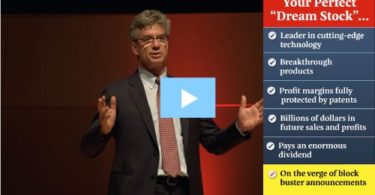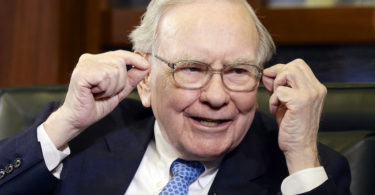Company Overview & Pipeline
Monopar Therapeutics (NASDAQ: MNPR) is a clinical-stage biopharma focused on two distinct areas: a late-stage rare disease drug and early-stage radiopharmaceutical cancer therapies. Its lead asset is ALXN-1840 (tiomolybdate choline), a treatment for Wilson disease (a rare genetic disorder of copper metabolism). Monopar licensed ALXN-1840 from Alexion/AstraZeneca in late 2024 after a Phase 3 trial met its primary endpoint ([1]). The company took over full responsibility for this program in mid-2025 (Alexion formally transferred the IND to Monopar effective June 2025) ([2]) and is now preparing to submit a New Drug Application (NDA) to the FDA by early 2026 ([2]). Monopar’s pipeline is otherwise centered on its proprietary uPAR-targeted radiopharmaceutical platform for cancer: MNPR-101-Zr (Phase 1 imaging agent for advanced cancers) and MNPR-101-Lu/Ac (Phase 1a therapeutic and preclinical programs) ([3]). These radiotherapeutic candidates are in first-in-human or preclinical stages, providing longer-term upside but no near-term revenues. In summary, Monopar now straddles two niches – rare genetic disease and radiopharma oncology – with ALXN-1840 representing the most immediate value driver.
Wilson Disease Opportunity: Wilson disease is a rare but serious condition in which copper accumulates in organs (mainly liver and brain) due to a genetic defect. Existing treatments like penicillamine and trientine are decades-old and can have significant side effects (renal, hematologic issues, or even neurological worsening) ([4]). ALXN-1840 offers a differentiated mechanism (tightly binding copper to remove it) and potentially a best-in-class efficacy/safety profile, avoiding many drawbacks of current drugs ([4]). Notably, Monopar’s CEO had a long history with this compound and the Wilson disease community, which helped catalyze the licensing deal ([1]) ([1]). AstraZeneca’s rare disease unit (Alexion) halted development in 2023 despite positive Phase 3 results, reportedly after additional mechanistic trials and regulator discussions ([1]). Monopar seized the opportunity to advance ALXN-1840, aiming to address what remains a high unmet medical need in Wilson disease. If approved, ALXN-1840 could become the first new Wilson therapy in decades, with Monopar initially targeting the ~25% of patients who are poorly served by current standards ([4]). An Oppenheimer analyst estimates this subset alone represents a ~$500 million peak sales opportunity ([4]), underlining the drug’s commercial potential if Monopar can navigate it to market.

URGENT: Get “Trump\'s Secret Fund” — Learn How to Collect Royalty Checks
Limited report reveals the #1 American oil & gas royalty play that can start paying monthly — with just $50.
Start w/ $50
Yes — Send My Report
Fast download • Instant access • Seats limited
Radiopharmaceutical Programs: In parallel, Monopar continues to develop its MNPR-101 radiopharma platform, which targets the uPAR receptor (often overexpressed in aggressive cancers). The lead diagnostic agent MNPR-101-Zr is in a Phase 1 imaging trial and has shown high, selective tumor uptake in preclinical models ([5]) ([5]). A therapeutic radio-immunotherapy (MNPR-101-Lu) began a Phase 1a trial in late 2024 ([5]). These programs are promising – for example, preclinical studies of MNPR-101 with actinium-225 and lutetium-177 radioisotopes showed near-complete elimination of tumors in models ([5]) – but they remain early-stage. Any revenue impact from radiopharmaceuticals is years away, and the oncology focus doesn’t directly overlap with the Wilson disease program (aside from leveraging Monopar’s expertise in rare indications). Still, this pipeline diversification could pay off long-term if clinical success continues. In the short term, investors’ attention is firmly on ALXN-1840’s progress toward FDA approval and potential commercialization.
$135 Million Equity Offering – Structure & Impact
Monopar’s September 2025 underwritten offering marks a pivotal financing event for the company. The deal, announced on Sept. 23, 2025, raised gross proceeds of $135 million through a combination of common stock and pre-funded warrants ([6]). Specifically, Monopar sold 1,034,433 new shares of common stock at $67.67 per share, and issued 960,542 pre-funded warrants (in lieu of common shares for certain investors) at $67.669 each, with a mere $0.001 per share exercise price ([6]). This structure allowed large investors to participate without immediately breaching ownership limits (the pre-funded warrants are essentially equivalent to shares, paid mostly upfront). The offering price of $67.67 represented roughly the market closing price that day ([6]), indicating healthy demand and minimal discount.
Proceeds Utilization: Monopar’s net proceeds will be somewhat lower than the $135M headline due to a significant concurrent buyback of insider shares. According to the company, the effective net proceeds (after an anticipated insider stock repurchase but before underwriting fees/expenses) are expected to be about $100 million ([6]). Monopar plans to use the bulk of this $100M for general corporate purposes – i.e. funding R&D, ongoing clinical trials, manufacturing scale-up, and working capital ([6]). In particular, these funds will support the completion of the ALXN-1840 NDA submission and regulatory process, and potentially initial commercialization activities, as well as continued development of the MNPR-101 radiopharma programs. Notably, the company earmarked up to $35 million of the gross proceeds to repurchase shares from Tactic Pharma, LLC, an early insider investor ([6]). This share repurchase is being done at $63.6098 per share (equal to the offering price minus underwriting discounts) ([6]). Roughly 550,000 shares held by Tactic Pharma will be bought back and retired, providing liquidity to that insider while using a portion of the new capital.
Show the 3 steps ▾
- Confirm the Trend — watch the confirmation cross.
- Buy an Option — call for up, put for down.
- Sell & Collect — take your skim and rinse-repeat.
Capital Structure Changes: The financing is significantly accretive to Monopar’s balance sheet. As of June 30, 2025 (prior to the offering), Monopar had $53.3 million in cash and investments on hand ([2]). Management believed this was sufficient to fund operations through at least end of 2026 – covering the NDA filing for ALXN-1840 and ongoing early-stage trials ([2]). The $100M net raise essentially doubles the cash reserves, likely pushing pro forma cash to ~$115–120 million (after subtracting the $35M used for the buyback). This fortress-like cash position extends Monopar’s runway well beyond 2026, enabling the company to execute on a potential FDA approval and launch for ALXN-1840 without near-term financing pressure. It’s a game-changer, as Monopar can now approach pivotal milestones from a position of financial strength. Importantly, the offering increases total shares outstanding by roughly one-third (from ~6.1 million pre-deal to ~8.1 million if all warrants are exercised) – diluting existing shareholders but arguably in exchange for the capital required to unlock the Wilson disease opportunity. Management explicitly highlighted dilution as a necessary risk of funding growth; previous raises in late 2024 had already expanded the float ([7]), and this larger 2025 raise continues that trend.
Insider Ownership Impact: The Tactic Pharma share repurchase is an unusual but noteworthy aspect of the deal. Tactic Pharma was Monopar’s founding investor and, through a venture entity, formerly controlled a majority stake prior to Monopar’s IPO. Even after dilution from 2024 equity offerings, Tactic Pharma remained a significant shareholder (~14% ownership as of late 2024) ([8]). By buying ~0.55 million of Tactic’s shares, Monopar is reducing a potential overhang on the stock – effectively facilitating a partial exit for insiders at the offering price rather than risking those shares trickling into the open market. This move likely brings Tactic’s ownership down to only a few percent, materially diminishing insider concentration. On one hand, insiders cashing out at a multi-year high price could be seen as a red flag regarding their confidence in the stock’s future. On the other hand, the controlled nature of the sale (at the same price as new investors paid) removes a large block of stock in a shareholder-friendly way, and may improve the corporate governance profile (by lessening any single insider’s influence). Overall, the offering leaves Monopar with a cleaner capital structure (no debt, more cash, and a broader investor base) and aligns new institutional investors alongside existing shareholders for the next phase of the company’s growth. Morgan Stanley, Leerink, and Barclays underwriting the deal also suggests increasing Wall Street interest in Monopar’s story ([6]).
Dividend Policy & Cash Flow Profile
Like most development-stage biotechs, Monopar does not pay any dividend and has never returned cash to shareholders. The company has never declared or paid cash dividends on its stock, and it explicitly states it has no plans to do so in the foreseeable future ([8]). Instead, any future earnings (if and when achieved) are intended to be reinvested to fund growth and product development ([8]). This policy is unsurprising given Monopar’s lack of product revenue and ongoing need to finance R&D – every dollar is better spent advancing drug programs than paying dividends at this stage. Consequently, Monopar’s dividend yield is 0%, and income-focused investors are not part of the shareholder base.
In terms of cash generation, Monopar currently has negative operating cash flow and relies on external financing. Key metrics like Funds From Operations (FFO) or Adjusted FFO (AFFO) are not meaningful for this company – those are used for cash-generative businesses (e.g. REITs), whereas Monopar has no recurring income yet. Instead, one must accept that Monopar will consume cash until a drug is approved and commercialized. For perspective, Monopar’s net loss in 2024 was $15.6 million (widened from an $8.4M loss in 2023) ([9]). This loss included a one-time in-process R&D charge tied to the ALXN-1840 license (the Q4 2024 loss spiked to $10.9M due to the upfront payment and related costs) ([9]). Underlying quarterly operating losses (excluding such one-time items) have been on the order of ~$2–3M, reflecting modest R&D and G&A spend for a company of this scope ([2]) ([2]). Monopar has been judicious with expenses; for example, Q2 2025 R&D was $1.73M and G&A $1.50M ([2]) ([2]). As a result, cash burn was relatively low – the company only used about $7M of cash in the first half of 2025, and interest income on its cash holdings partly offset operating expenses (as suggested by net loss being lower than total R&D+G&A) ([2]) ([2]).
Looking forward, cash runway is no longer a pressing concern after the $135M raise. Prior to the offering, management projected existing cash (~$53M in June 2025) was sufficient to fund operations through at least December 2026 ([2]), including completing the ALXN-1840 NDA package and continuing all current trials. With an additional ~$65M net added to the coffers (post-repurchase), Monopar’s runway likely extends well into 2027/2028. This could cover the period of NDA submission, FDA review (2026), potential approval, and even a year or two of initial marketing efforts for ALXN-1840. In essence, Monopar is fully financed for its near-to-mid-term objectives – a critical advantage in the biotech space, where many peers face cash crunches. There is no need for debt financing or dilutive equity raises in the immediate future if all goes according to plan. Monopar currently carries no interest-bearing debt on its balance sheet (the company has historically funded itself via equity issuances, collaboration payments, and grants, avoiding loans) ([8]). The only liabilities of note are normal working-capital items and future contingent payments under the Alexion license. (Per the license terms, Alexion/AZ received an upfront payment in cash and equity, and will be due tiered royalties on net sales plus regulatory and sales milestones if ALXN-1840 succeeds ([1]). These obligations will kick in only upon drug approval/sales and are effectively a sharing of future revenues rather than fixed debts.) With no debt and a cash-rich balance sheet post-offering, Monopar’s financial footing is robust – an important underpinning as it tackles the costly tasks of regulatory approval and, potentially, commercialization.
Valuation & Outlook
Monopar’s valuation has soared alongside its clinical progress and the market’s recognition of ALXN-1840’s potential. As of the offering, MNPR stock traded around $67.67 per share ([6]), up over +200% year-to-date ([6]) and reflecting a market capitalization of roughly $500 million (pro forma for the new shares). This valuation is primarily a bet on ALXN-1840’s future commercial success in Wilson disease. By traditional metrics, Monopar looks expensive – it has no product revenue, ongoing losses, and a price-to-book ratio near 4–5x (with ~$115M book equity post-financing, mostly cash). However, such metrics are of limited relevance for a development-stage biotech. Investors are instead valuing the risk-adjusted pipeline. At ~$500M market cap, Monopar is being valued at roughly 1.0x the estimated peak sales of ALXN-1840’s initial addressable market: Oppenheimer’s analyst calculates about $500M in peak annual sales if the drug penetrates ~25% of Wilson disease patients (those most in need of a new therapy) ([4]). If ALXN-1840 wins approval and captures that revenue over time, a $500M valuation could prove quite modest – especially considering rare-disease drugs often trade at multiple times annual sales due to high margins and long exclusivity. The recent price target of $77 set by Oppenheimer (Outperform rating in Sept 2025) underscores this upside; it equates to roughly a $600+ million market cap, implying further upside if key milestones are hit ([4]). The bullish thesis is that ALXN-1840 may become a best-in-class therapy and significantly improve the standard of care, enabling premium pricing and global adoption beyond the sickest 25% of patients. Moreover, Monopar’s abundant cash could allow it to commercialize the drug itself in the U.S., capturing more value (or alternately, to negotiate a favorable partnership or buyout thanks to not being in a cash-starved position).
That said, Monopar’s current valuation also bakes in substantial clinical and regulatory risk. The ~$500M market cap is far above the ~$100M levels seen before Monopar acquired ALXN-1840 ([7]), meaning expectations are high. If the FDA throws a curveball – for instance, requiring an additional confirmatory trial or expressing safety concerns – the stock could retrace sharply. Even in a straightforward approval scenario, it will take time and execution to turn ALXN-1840 into actual revenues. The company’s price-to-earnings and price-to-sales ratios are not meaningful yet (both effectively infinite with negative earnings and zero sales). Investors should expect continued volatility: a small-cap biotech like Monopar can swing wildly on news (positive trial updates, regulatory filings, or, conversely, delays and rumors). The stock’s 200%+ YTD rally suggests many positives are already priced in, raising the bar for further gains in the near term. Monopar’s enterprise value (EV), after accounting for ~$115M cash, is around $380–400M – which represents the market’s collective guess at the present value of ALXN-1840’s odds of approval and future profits, plus any value for the earlier-stage assets. This EV will adjust as new information arrives. For example, acceptance of the NDA (perhaps in 1H 2026) or announcement of a commercialization partner could de-risk the story and justify a higher valuation. Conversely, any indication of regulatory hurdles or competition encroaching could compress the valuation multiples.
Peer Comparison: Direct comparables are limited, as few small-cap biotechs have a late-stage Wilson disease drug. The closest analogs might be other orphan disease-focused biotechs in Phase 3 or pre-commercial stage. Many of those trade in the few-hundred-million range, depending on the size of their target markets and trial data strength. In Monopar’s case, Wilson disease is a niche indication (thousands of patients worldwide), but one with no new therapies in decades, which could support orphan-drug pricing and rapid uptake among patients who fail existing agents. Another competitive consideration is the gene therapy approaches under development for Wilson’s disease. Companies like Ultragenyx and Vivet/Pfizer have early-stage gene therapy trials ongoing for Wilson disease ([10]). While these are still nascent (Phase 1) and years from potential approval, they aim to cure the disease by fixing the genetic defect. If successful, gene therapy could eventually reduce the long-term patient pool for drugs like ALXN-1840. The market seems to be discounting that threat for now – appropriately so, given technical and safety uncertainties in gene therapy – but it’s a factor in how much of Wilson disease treatment value Monopar can ultimately capture.
Beyond ALXN-1840, Monopar’s valuation does not heavily account for the radiopharmaceutical pipeline yet, in our view. The MNPR-101 programs are so early that their success probabilities are hard to gauge. Any meaningful breakthrough or partnership in the radiopharma pipeline (for instance, positive Phase 1 efficacy signals or a deal with a larger oncology company) would represent pure upside to the current valuation. For now, these programs serve as a “pipeline optionality” – they diversify Monopar’s story and could generate long-term value, but the stock’s core valuation rests on the nearer-term rare disease opportunity.
Risks, Challenges & Open Questions
While Monopar’s recent financing and pipeline progress are encouraging, investors should keep in mind several risks and red flags:
– Regulatory and Clinical Risk – ALXN-1840 is not guaranteed to obtain FDA approval. Even though its Phase 3 met the primary endpoint and long-term data look promising ([11]) ([11]), the prior sponsor (Alexion/AZ) halted the program after reviewing additional Phase 2 mechanistic trial data and discussions with regulators ([1]). This suggests there may have been regulatory concerns or unresolved questions (perhaps around certain safety signals, trial endpoints, or the need for further data). Monopar will need to convince regulators that ALXN-1840’s risk/benefit profile warrants approval. If the FDA requires an additional trial or extensive data analysis, it could delay approval by years or even imperil the program. Investors are awaiting the NDA filing in early 2026 and subsequent FDA acceptance. Regulatory feedback at that stage will be pivotal. Until approval is in hand, ALXN-1840 remains a binary event – success could unlock tremendous value, while a rejection or major delay would be devastating to Monopar’s valuation.
– Single-Asset Dependency – Monopar’s fate is largely tied to one asset now. The majority of the company’s valuation hinges on ALXN-1840. The rest of the pipeline (uPAR radiopharmaceuticals) is too early-stage to support the stock if ALXN-1840 fails. This concentration risk means Monopar is not buffered by multiple revenue streams or diversified programs like larger pharma companies. Any hiccup with ALXN-1840 (regulatory setback, slower-than-expected uptake, unforeseen side effects) would have outsized impact on the company. Monopar’s management has diversified scientifically, but until the radiopharma candidates reach later stages, the company is essentially a one-product story in the eyes of the market.
– Commercial Execution & Market Adoption – If ALXN-1840 is approved, Monopar faces the challenge of commercializing a rare disease therapy for the first time. The company has no experience in marketing or sales – though its leadership includes orphan drug veterans ([1]), Monopar will need either to build a commercial infrastructure or partner with/licensing to a larger player. Key open questions include: Will Monopar launch ALXN-1840 solo in the U.S., or secure a commercialization partner? Can it afford the required specialist sales force and patient support programs if going alone? The $100M net proceeds provide some firepower for a modest launch, but a typical nationwide launch for an orphan drug can easily run into the tens of millions in the first year (for hiring sales reps, medical affairs, marketing, etc.). Monopar may choose a strategy of partnering outside the U.S. (or even within the U.S.) to leverage an established rare-disease commercial infrastructure. Any partnership could bring in upfront payments but also cede a chunk of revenue. If they go alone, execution risk is significant – missteps in pricing, reimbursement, or physician outreach could limit uptake. Furthermore, while ALXN-1840 appears to have advantages, Monopar will need to educate physicians on its use and advantages over entrenched generic penicillamine/trientine. The Oppenheimer analysis notes ALXN-1840’s more favorable safety profile ([4]), but real-world acceptance will depend on convincing hepatologists and neurologists of its clinical superiority and justified cost.
– Competition – Current & Future – As mentioned, current standard treatments for Wilson’s (penicillamine, etc.) are generic, which means cost-sensitive payers might favor them until ALXN-1840 proves clear benefits. Monopar may need to generate post-approval data showing improved patient outcomes or tolerability to drive switching from cheaper generics. Additionally, future competition looms in the form of gene therapies. There are at least two gene therapy trials underway for Wilson disease (by Ultragenyx and by Vivet/Pfizer) ([10]). While these are early and success is uncertain, a one-time curative gene therapy (if it emerges in coming years) could drastically reduce demand for a chronic therapy like ALXN-1840. Monopar’s window to establish ALXN-1840 as a standard-of-care might be finite. Another competitor could be novel oral chelators under development (if any biotech or academic group is working on next-gen small molecules – currently none are as advanced as ALXN-1840, to our knowledge). Monopar will have to continuously innovate (e.g., perhaps develop ALXN-1840 for earlier lines of therapy or pediatric use) and possibly seek lifecycle extensions to maintain an edge if competitors approach.
– Dilution & Financing Uncertainties – Thanks to the recent raise, Monopar is well-capitalized for now. However, in biotech “well-capitalized” is always relative to ambition. If Monopar decides to pursue additional indications for ALXN-1840 or expand its pipeline further, or if timelines slip (e.g., regulatory approval takes longer), the cash burn could increase. There remains a risk of future dilution – for instance, if the company opts to raise more capital to fund a larger commercial launch or a new trial, it may tap the equity markets again, which would dilute shareholders further. The late 2024 and 2025 financings demonstrate management’s willingness to issue equity when the stock price is favorable ([7]). Investors should monitor the company’s cash usage relative to plans; an accelerated burn rate or new strategic initiatives could foreshadow the need for more funding (though likely not until after the NDA outcome is known). On the flip side, Monopar could also choose to monetize assets rather than raise equity – for example, licensing MNPR-101 programs to partners, or even selling ex-U.S. rights to ALXN-1840 to fund U.S. operations. These scenarios could mitigate dilution but are not guaranteed.
– Insider Sales & Ownership Structure – A subtle red flag is the sale of shares by insiders/Tactic Pharma via the stock repurchase. While this was done in an orderly fashion, it indicates that some of the earliest investors chose to reduce exposure at current prices. Tactic Pharma and related founders still retain a stake (albeit much smaller now), and their interests remain generally aligned with shareholders, but the partial cash-out could signal that they viewed the ~$64–$68 range as an opportune time to take profit. It’s also worth noting that insider ownership is now lower; with Tactic’s stake diminished, management and directors likely own a modest percentage of the company (exact figures post-offering aren’t yet reported). Lower insider ownership can be a two-edged sword: on one hand, the stock may have more liquidity and broader ownership; on the other, insiders have less skin in the game than before. That said, key executives (CEO, CSO, etc.) are still highly incentivized by the company’s success beyond just shares (reputation, options, career legacy, etc.), so this is a minor point.
In summary, Monopar faces the typical high stakes of a late-stage biotech: everything rides on execution over the next 12–18 months. The upside potential (a successful NDA and launch in an orphan indication with limited competition) could transform Monopar from a clinical-stage to a commercial-stage company with significant revenues. Yet the downside risks (regulatory setbacks or market hurdles) are non-trivial, and investors should be prepared for continued stock volatility. The recent financing has de-risked the financial side – Monopar is unlikely to face a cash crunch at an inconvenient time, which is a major positive – but it doesn’t remove scientific or regulatory risk.
Conclusion & Key Takeaways
Monopar’s $135M offering indeed “sparks game-changing potential” for the company. With over $100M in fresh net capital, Monopar has the resources to fully prosecute its lead program and, if approved, begin commercialization without immediate financial strain. The financing also brought in institutional support and cleaned up a chunk of insider ownership, positioning Monopar as a more investable, mid-cap rare disease player rather than a cash-starved micro-cap. The company’s narrative heading into 2026 will center on one overarching question: Can Monopar turn ALXN-1840 into a commercial reality? If the answer is yes – FDA approval and a successful launch – the rewards could be substantial for both patients (a much-needed new therapy) and shareholders. Monopar would move into a revenue-generating phase with a potential blockbuster (by orphan standards) on its hands. Additionally, success with ALXN-1840 would validate management’s strategy and could shine a spotlight on the rest of Monopar’s pipeline (for example, making it easier to attract partners or investors to its radiopharmaceutical projects).
However, execution is key. In the coming months, investors should watch for NDA filing and acceptance news (any sign of FDA requiring extra data would be important), updates on partnering or commercialization plans (does Monopar hire a sales force or sign a marketing partner?), and continued clinical data presentations to build ALXN-1840’s profile (e.g., at medical conferences or in journals). The company’s presentation of long-term data at EASL 2025 showed sustained efficacy over ~2.5 years ([11]) ([11]) and even patient-reported benefits, which bodes well – keeping such data in front of regulators and physicians will be critical to drive confidence. On the radiopharma front, any Phase 1 readouts or expansion of trials in 2024–2025 could add incremental value (or at least remind the market that Monopar has more shots on goal beyond Wilson disease).
Open questions remain about the market uptake for ALXN-1840 if approved: How many patients will switch from existing therapy? Will payers readily reimburse a presumably high-priced new drug? Monopar’s ability to navigate pricing and access will factor into eventual sales. Another question is whether Monopar remains independent through this process – given the attractive profile of ALXN-1840 and Monopar’s now solid balance sheet, the company could be a takeover or partnership target for larger pharma companies specializing in rare diseases or hepatology. The presence of tier-1 underwriters (Morgan Stanley, etc.) in the offering may hint that Monopar is on bigger players’ radar ([6]). Any strategic interest could unlock value sooner (via a buyout) but is speculative at this point.
In conclusion, Monopar Therapeutics stands at a transformative juncture. The $135M capital infusion has fortified the company’s finances, enabling it to concentrate on execution. Monopar offers a high-risk/high-reward profile: it is well-funded and close to a potential approval in a niche but meaningful market, yet it must prove that it can clear the final regulatory hurdles and successfully deliver its therapy to patients. Investors should be prepared for both triumphs and trials ahead. With the NDA submission on the horizon and a critical FDA decision by 2026, the next year will be make-or-break. If Monopar delivers, the current valuation could be vindicated (or even left looking cheap) ([4]). If not, the stock’s prior exuberance could swiftly correct. As always in biotech, diversification and caution are advised – but for those bullish on Monopar’s science and strategy, the recent developments indeed spark optimism that 2025–2026 could be a game-changing era for MNPR.
Sources: Monopar SEC filings and press releases; investor presentations and financial reports; Oppenheimer research commentary; industry news and Wilson Disease Association updates ([8]) ([6]) ([6]) ([6]) ([2]) ([8]) ([1]) ([4]) ([10]).
Sources
- https://biospace.com/press-releases/monopar-announces-agreement-with-alexion-astrazeneca-rare-disease-for-late-stage-wilson-disease-drug-candidate
- https://ir.monopartx.com/press-releases/detail/119/monopar-therapeutics-reports-secondquarter
- https://globenewswire.com/news-release/2025/09/24/3155163/0/en/Monopar-Therapeutics-Inc-Announces-Pricing-of-135-Million-Underwritten-Offering-of-Common-Stock-and-Pre-Funded-Warrants.html
- https://ainvest.com/news/monopar-therapeutics-receives-oppenheimer-coverage-initiation-outperform-77-pt-2509/
- https://ir.monopartx.com/press-releases/detail/96/monopar-therapeutics-reports-second-quarter-2024financial
- https://marketscreener.com/news/monopar-therapeutics-inc-announces-pricing-of-135-million-underwritten-offering-of-common-stock-an-ce7d58dddd8afe22
- https://itiger.com/news/2486852096
- https://sec.gov/Archives/edgar/data/1645469/000143774925009979/mnpr20241231_10k.htm
- https://marketscreener.com/quote/stock/MONOPAR-THERAPEUTICS-INC-66480648/news/Monopar-Reports-Fourth-Quarter-and-Full-Year-2024-Financial-Results-and-Recent-Developments-49483651/
- https://wilsondisease.org/living-with-wilson-disease/treatment/genetic-therapies/
- https://trial.medpath.com/news/325694dd061ac9e1/alxn1840-shows-promising-long-term-efficacy-and-safety-for-wilson-disease-at-easl-2025
For informational purposes only; not investment advice.





